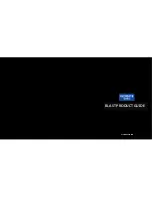
GENERAL OPERATION
16
As indicated in the preceding “Note”, the trans-
ceiver must be connected to a constant power source to
preserve the encryption (hardware) keys in memory. To
allow the battery to be changed without losing these
keys, storage capacitors maintain the supply voltage to
memory for approximately 1 minute without a battery
attached. Therefore, when changing the battery of a
transceiver that has these keys stored, be sure to reat-
tach a battery within that time. Refer to Section 8.1.6
for more information on encryption keys.
There is a battery saver feature that can be
enabled by programming. This feature functions on
trunked channels and Flash code 1.7.0 or later only,
and it causes low transmit power to be selected when
the receive signal strength (RSSI) indicates that the
site is nearby.
3.5 BACKLIGHT
The backlight for the display and option keys can
be programmed to automatically turn on when any key
is pressed. It then automatically turns off after a
programmed delay of 0-7.5 seconds so that battery
drain is minimized. If the Backlight option switch or
menu parameter is programmed, the user can manually
turn the backlight on and off (it then stays on). If the
Surveillance mode is programmed, the backlight is
disabled (see Section 4.7).
3.6 KEYPAD LOCK
The Keypad Lock feature temporarily disables
the front panel keys to prevent accidental key presses.
This feature is available if the Keypad Lock option
switch is programmed.
To lock the keypad, simply press the Keypad
Lock option switch. Then to unlock the keypad again,
press and hold this switch until a tone sounds or for
approximately 1 second.
With DTMF models, the DTMF keys can be
totally disabled by programming. In addition, they can
be selectively enabled or disabled on conventional
analog channels.
3.7 SETTING SQUELCH
This transceiver does not have a squelch control.
The squelch level is preset during alignment. If the
keypad programming feature is available (see Section
5.17), the squelch level can be changed by the user on
each conventional analog channel.
3.8 TRANSCEIVER OPERATING MODES
3.8.1 GENERAL
Each selectable channel can be programmed for
the conventional (analog or Project 25 digital),
SMARTNET/SmartZone, or Project 25 digital trunked
operating mode. For example, Zone 1/Channel 1 could
be a conventional channel, Zone 1/Channel 2 a
SMARTNET channel, and so on. More information on
these modes follows.
3.8.2 CONVENTIONAL MODE
This is a non-trunked operating mode which
accesses independent radio channels. There is no auto-
matic access to several channels. Selecting a conven-
tional channel selects a transmit and receive frequency
and other channel parameters such as squelch control
coding.
Conventional channels can be either standard
(analog) or Project 25 (digital). With digital operation,
the DSP (Digital Signal Processor) converts the audio
signal to digital data which is sent over the air as
complex tones. Another difference is that analog chan-
nels use Call Guard (CTCSS/DCS) squelch control
and Project 25 channels use a NAC (Network Access
Code) and talk group ID codes.
With Project 25 operation, a NAC is transmitted
and it must match the NAC programmed in the base
equipment and the mobile(s) being called for commu-
nication to occur. In addition, to receive standard group
calls, the receiving mobile must be programmed to
detect the transmitted talk group ID code.
With conventional operation, a busy channel
condition is detected automatically if the busy channel
lockout (transmit disable on busy) feature is
programmed. Otherwise, it must be detected manually.
An out-of-range condition is not indicated by special
tones or messages as with SMARTNET operation
because there is no initial data exchange with the
repeater that allows this condition to be detected.
Operating features unique to conventional channels
are described in Section 5.
Summary of Contents for 5100 SERIES
Page 47: ......
















































